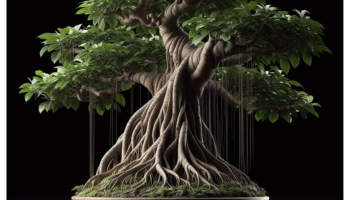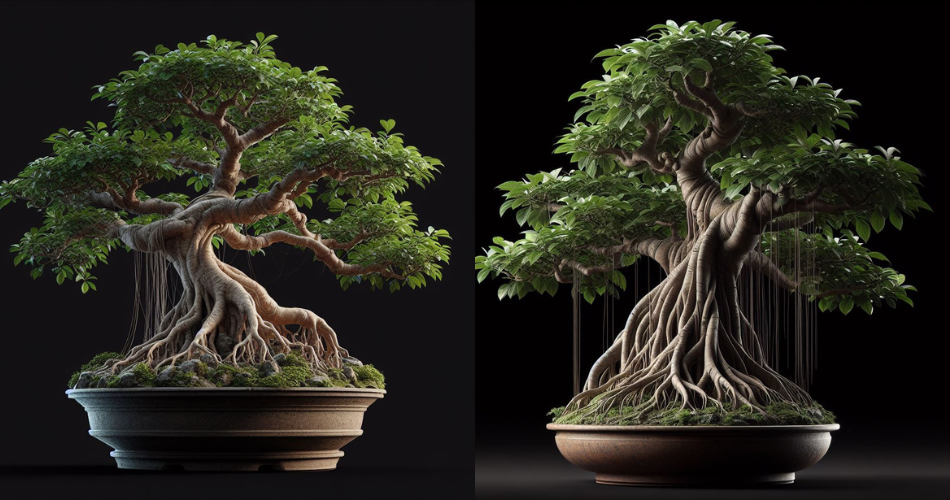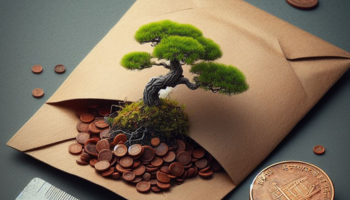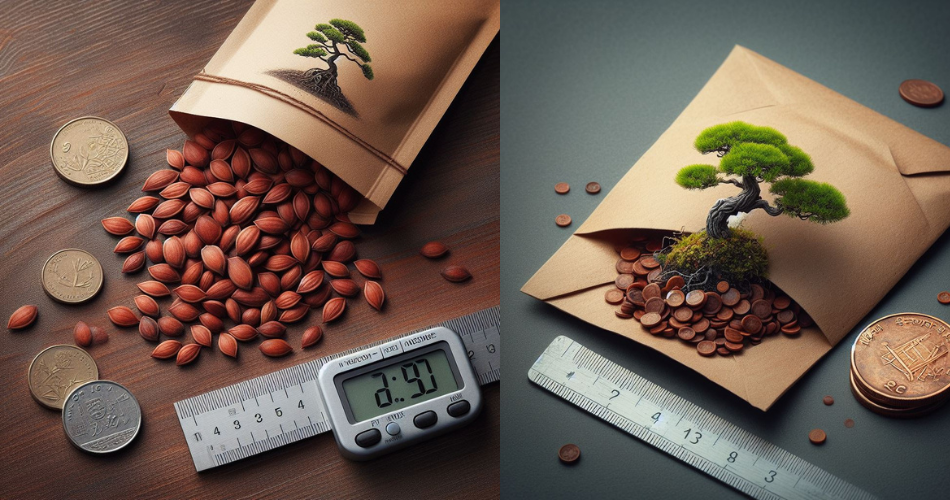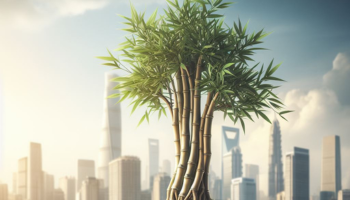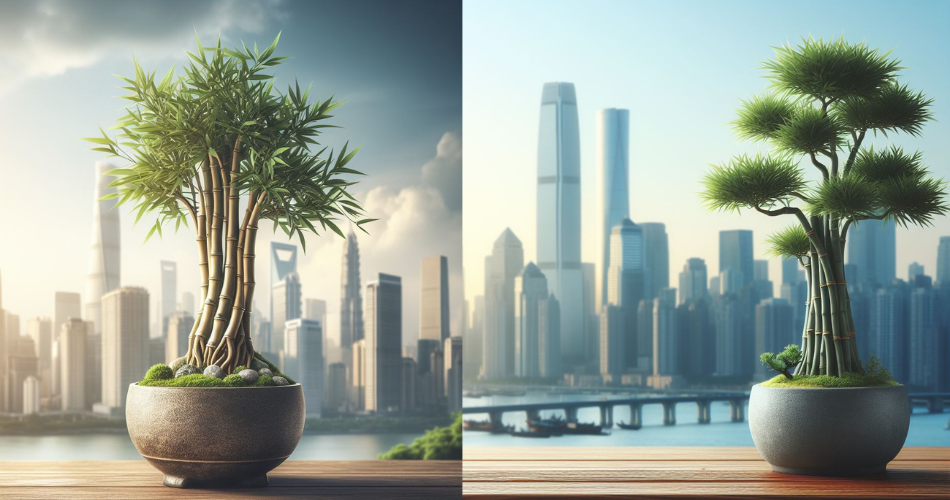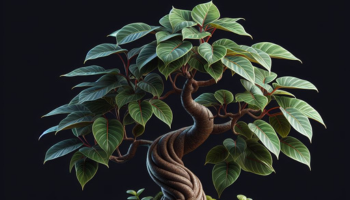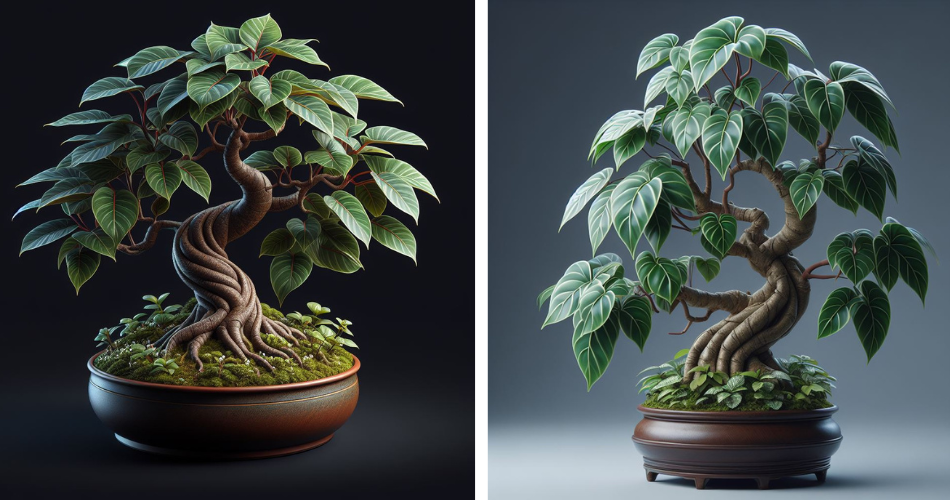Yamadori Bonsai, an ancient Japanese art form, involves the careful collection and cultivation of wild trees from natural environments. Rooted in a deep appreciation for nature, Yamadori Bonsai enthusiasts embark on journeys to forests in search of unique specimens with the potential to become stunning bonsai trees. This article delves into the intricacies of collecting Yamadori Bonsai, providing a comprehensive guide on the techniques, tools, and considerations necessary for a successful collection. From understanding the ethics and regulations surrounding Yamadori collection to nurturing and styling these precious trees, we explore the journey of transforming a wild tree into a captivating bonsai masterpiece.
Exploring the Art of Collecting from Forests
1.1 What is Yamadori Bonsai?
Imagine being able to capture the essence of nature in a miniature living sculpture. That’s what Yamadori Bonsai is all about. Yamadori, which roughly translates to “mountain plants” in Japanese, refers to the art of collecting wild trees from their natural habitats and transforming them into beautiful bonsai. These trees have unique character, shaped by the rugged conditions of their environment, and offer a distinct beauty that can’t be replicated by cultivated bonsai.
1.2 The Historical Significance of Yamadori Bonsai
Yamadori Bonsai has a rich history dating back centuries. In ancient times, bonsai enthusiasts would venture into the mountains to find remarkable trees, which were then cultivated and nurtured into miniature masterpieces. This practice not only preserved nature’s beauty but also served as a spiritual endeavor, connecting people with the natural world.
1.3 Appreciating the Unique Beauty of Yamadori Bonsai
What sets Yamadori Bonsai apart is its unparalleled authenticity. These trees have endured the test of time, wind, and weather, resulting in distinctive trunks, branches, and foliage. Each tree tells a story, bearing the marks of its environment. Collecting and cultivating Yamadori Bonsai allows us to bring a piece of untamed nature into our lives and appreciate its raw beauty.
2. Understanding the Ethics and Regulations: Responsible Yamadori Bonsai Collection
2.1 Respecting Local Regulations and Permissions
Before embarking on a Yamadori Bonsai collecting adventure, it’s crucial to research and understand the regulations and permissions in your designated collection area. Many forests have rules in place to protect natural habitats and ensure sustainable collection practices. By respecting these regulations, you’ll not only preserve the environment but also contribute to the long-term availability of Yamadori specimens.
2.2 Ethical Considerations in Yamadori Collection
Ethics play a vital role in Yamadori Bonsai collection. It’s essential to prioritize the health and survival of the collected trees. Only collect species that can thrive in your climate, and never deplete a population by excessive collecting. Additionally, obtain permission from landowners or relevant authorities, respecting their property rights and protecting the integrity of the ecosystem.
2.3 Preserving the Natural Environment during Collection
When collecting Yamadori Bonsai, it’s crucial to minimize the impact on the surrounding environment. Dig responsibly, using appropriate tools to avoid damaging the tree’s root system or disturbing the habitat. Leave no trace behind, ensuring the area remains undisturbed for future generations of both trees and enthusiasts.
3. Essential Tools and Equipment for Yamadori Bonsai Collection
3.1 Basic Tools for Yamadori Collection
Collecting Yamadori Bonsai requires a few essential tools. A sturdy shovel or spade will help you carefully remove the tree from its natural environment while preserving its roots. Root cutters and branch cutters allow for precise trimming and shaping. Additionally, a pair of heavy-duty gloves will protect your hands during the collection process.
3.2 Specialized Tools for Safe and Effective Collection
For more advanced collectors, specialized tools can significantly enhance the efficiency and safety of the collection process. Tools like root hooks, jin pliers, and knob cutters can aid in extracting trees with minimal damage. These tools are designed specifically for bonsai enthusiasts and can make a world of difference in the success of your Yamadori Bonsai collection.
3.3 Equipment for Transporting and Storing Yamadori Bonsai
Once you’ve collected your Yamadori specimens, it’s important to have the right equipment to transport and store them properly. A sturdy wooden crate or bonsai bag will protect the tree during transportation, while proper potting soil and containers are essential for their temporary home until they can be re-potted. Watering cans and misters are also crucial for maintaining tree health during the initial post-collection period.
4. Locating Ideal Forests and Identifying Suitable Yamadori Candidates
4.1 Researching and Identifying Promising Forest Locations
Finding the perfect forest for Yamadori Bonsai collection requires some research. Look for areas with diverse vegetation, as a variety of tree species increases your chances of finding unique candidates. Local botanical gardens, horticultural societies, or experienced collectors can provide valuable insights into the best locations in your region.
4.2 Recognizing Indicators of Healthy Yamadori Candidates
When searching for Yamadori candidates, be on the lookout for trees that exhibit signs of health and vitality. Look for strong, well-developed trunks and branches, as these are the foundation for a magnificent bonsai. Avoid trees with significant wounds or diseases, as they may not recover well during the collection and styling process.
4.3 Evaluating the Aesthetic Potential of Yamadori Candidates
Yamadori Bonsai is not only about the health and vigor of the tree but also its potential as a visually captivating bonsai. Consider the tree’s overall shape, unique features, and potential design possibilities. Look for interesting twists, bends, or taper in the trunk, as these characteristics can add depth and intrigue to your future bonsai masterpiece.
Remember, collecting Yamadori Bonsai is a journey that requires patience, respect, and a deep appreciation for nature’s artistry. By following ethical guidelines, using the right tools, and carefully selecting suitable candidates, you can embark on an adventure that merges the natural world and the art of bonsai into something truly extraordinary. Happy collecting!. Common Mistakes to Avoid When Collecting Yamadori Bonsai
5. Techniques for Safely Collecting Yamadori Bonsai: Step-by-Step Process
5.1 Preparing for the Collection Journey
Before embarking on your adventurous quest to collect yamadori bonsai, it’s essential to properly prepare yourself. This includes acquiring the right tools, researching the species you wish to collect, and obtaining any necessary permits or permissions. Remember, we’re talking about rescuing trees, not the latest fashion trend, so be ready to get your hands dirty!
5.2 Excavation Techniques: Digging and Extraction
Once you’ve reached your yamadori bonsai’s secret hiding spot in the forest, it’s time to dig in—literally. With careful precision, use a range of tools, including root hooks, saws, and shovels, to delicately extract your newfound green treasure. Patience is key here, just like waiting for the perfect moment to capture the best selfie lighting.
5.3 Minimizing Stress and Damage to the Yamadori during Collection
Collecting yamadori bonsai is like playing bonsai surgeon. As you extract the tree, you want to minimize stress and potential damage. Be gentle, like a masseuse kneading dough, and ensure the roots remain moist throughout the process. Treat each root like your great-grandmother’s china, fragile but cherished.
6. Post-Collection Care and Transplanting: Ensuring Health and Adaptation
6.1 Immediate Care and Stabilization of Yamadori Bonsai
Once you’ve successfully rescued your yamadori bonsai, it’s time to pamper it with some immediate post-collection TLC. This involves inspecting for any additional pruning or root work, providing proper hydration, and shielding it from harsh elements. You’re essentially the bonsai equivalent of a spa day—minus cucumber slices.
6.2 Transplanting Techniques and Considerations
Settling your yamadori bonsai into its new home is like finding the perfect apartment. You need to ensure the right soil mixture, suitable pot size, and proper watering techniques. Remember, this is a bonsai, not a houseplant; it requires careful consideration to thrive. Don’t be that person who kills their new houseplant within a week. Yikes!
6.3 Providing Optimal Growing Conditions for Yamadori Bonsai
To ensure your yamadori bonsai grows to its full potential, you’ll need to provide it with optimal growing conditions. This includes finding the right balance of sunlight, temperature, and humidity. Think of yourself as a bonsai matchmaker—pairing your tree with the perfect environment for love and growth.
7. Common Mistakes to Avoid When Collecting Yamadori Bonsai
7.1 Rushing the Collection Process
Collecting yamadori bonsai requires patience, like waiting for your favorite show to release a new season on Netflix (the struggle is real). Rushing the process can lead to unnecessary damage and stress for the tree, and we all know nobody wants a stressed-out tree on their hands.
7.2 Neglecting to Properly Prepare and Plan
As the saying goes, failing to prepare is preparing to fail. Don’t be caught off guard when collecting yamadori bonsai. Properly prepare by researching, organizing your tools, and creating a solid plan of action. Trust us, your bonsai trees will thank you!
7.3 Failing to Provide Adequate Post-Collection Care
Once you’ve successfully collected your yamadori bonsai, the journey isn’t over—it’s just beginning. Neglecting proper post-collection care is like adopting a pet and then leaving it in the wilderness. Show your bonsai tree some love and attention, and it will reward you with its lively beauty for years to come.
8. The Art and Joy of Collecting Yamadori Bonsai
Collecting yamadori bonsai is both an art and an adventure. It requires skill, patience, and an appreciation for nature’s beauty. By following the proper techniques for collection, care, and transplanting, you can create a harmonious bond with your bonsai trees. So get out there, explore the forest, and rescue some bonsai beauties—just remember to watch out for those mischievous forest gnomes!In conclusion, the art of collecting Yamadori Bonsai from forests is a truly rewarding and transformative experience. By following ethical practices, utilizing the right tools, and understanding the needs of these wild trees, you can bring the beauty of nature into your bonsai collection. With patience and dedication, you can nurture these collected specimens into unique and captivating bonsai creations, each telling a story of its origins in the forest. So, venture into the wilderness, explore the art of Yamadori Bonsai, and embark on a journey that connects you with nature in a profound and artistic way.
FAQ
1. Is it legal to collect Yamadori Bonsai from forests?
Before collecting Yamadori Bonsai, it is important to research and understand the local regulations and permissions regarding tree collection. Some areas may have specific guidelines or restrictions in place to protect the natural environment. Always obtain the necessary permits and seek permission from landowners or relevant authorities to ensure legal and responsible collection.
2. What are the essential tools needed for Yamadori Bonsai collection?
Collecting Yamadori Bonsai requires specific tools to ensure the safe and effective extraction of trees from their natural habitats. Basic tools such as a sharp shovel, root cutter, concave branch cutter, and pruning shears are essential. Additionally, specialized tools like a root hook, root rake, and branch bender can be valuable for more intricate collection techniques.
3. How do I care for a collected Yamadori Bonsai after collection?
After collecting a Yamadori Bonsai, it is crucial to provide immediate care and stabilization to minimize stress and promote healthy adaptation. This includes careful watering, protection from extreme weather conditions, and the use of proper bonsai soil mixtures. Gradual introduction to sunlight and regular monitoring of the tree’s health are also vital in the post-collection care process.
4. Can any tree be collected as a Yamadori Bonsai?
Not all tree species are suitable for Yamadori Bonsai collection. It is important to identify trees that are resilient, have desirable characteristics, and are suitable for bonsai cultivation. Certain species, such as conifers and deciduous trees with small leaves and interesting bark, tend to be popular choices. Proper research and understanding of tree species and their adaptability to bonsai techniques are crucial when selecting candidates for Yamadori Bonsai collection.

